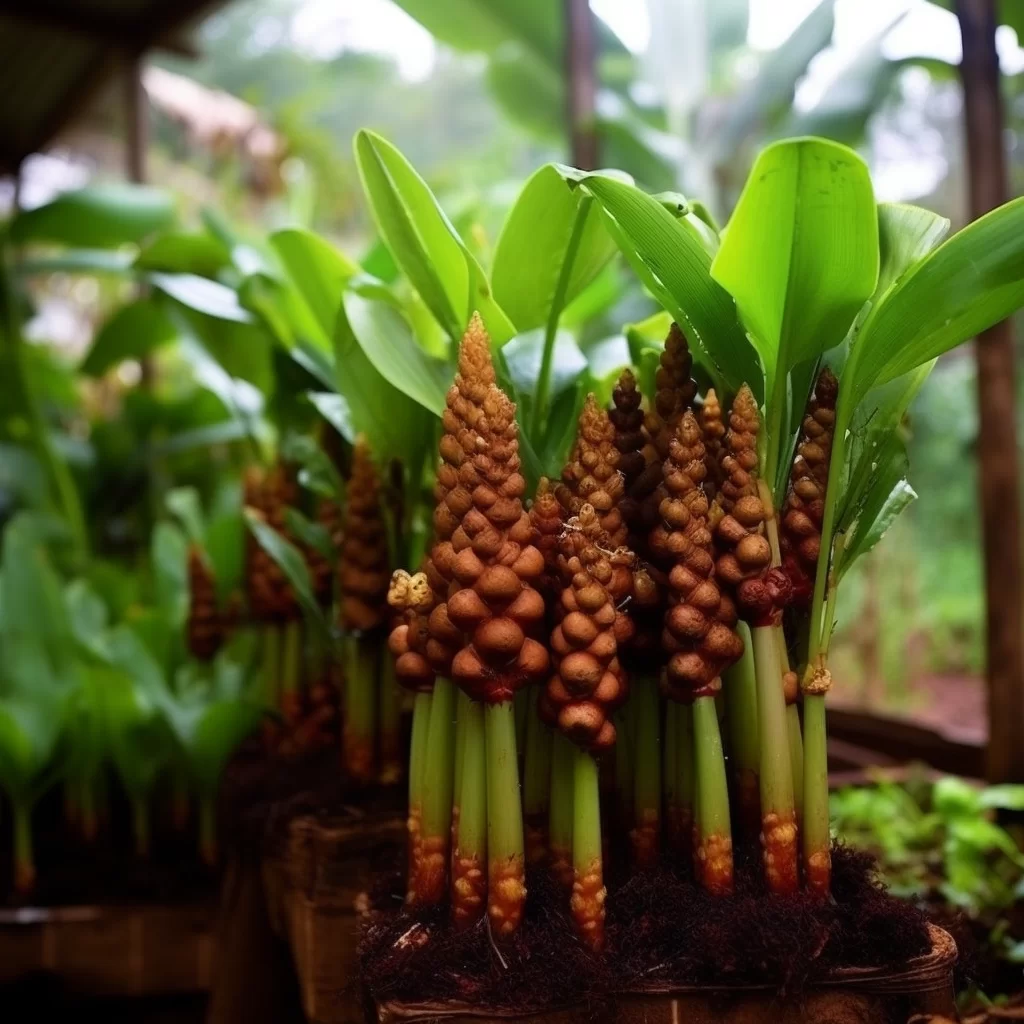Story of Day :
Contents
The Galangal Plant: A Complete Guide and Care Tips
Are you looking for a unique and exotic plant to add to your garden? Look no further than the galangal plant! This herbaceous perennial is native to Southeast Asia and is known for its medicinal properties, as well as its culinary uses.
In this article, we will provide a complete guide on how to care for the galangal plant.
What is Galangal?
Galangal belongs to the ginger family and has been used in traditional medicine for centuries.
Its root contains anti-inflammatory compounds that can help with arthritis, sore throats, and digestive issues.
The rhizome of galangal also adds flavor to many dishes in Southeast Asian cuisine.
Varieties of Galangal Plant

- Greater Galanga (Alpinia galanga)
- Lesser Galanga (Alpinia officinarum)
- Sandwich Ginger (Alpinia calcarata)
The most commonly grown type of galangal is greater galanga, which has larger rhizomes and a stronger flavor than lesser galanga.
Caring for your Galangal Plant
Growing a healthy galangal plant requires attention to soil quality, sunlight exposure, watering needs, fertilization schedule & pest control measures.. Here are some tips:

Soil Requirements:
- The planting area should have well-draining soil rich in organic matter that allows water retention without becoming too soggy.
- A slightly acidic pH level between 5.5-6.5 works best.
- It is recommended to amend the soil with compost or fertilizer before planting.
Sunlight Exposure:

- Galangal plants need partial sunlight to thrive.
Six hours of daily light exposure should suffice.
- Avoid direct sunlight, especially during mid-day as it may scorch the plant and have an adverse effect on its growth.
Watering Needs:
- The soil around the galangal plant must be kept moist but not waterlogged.
Overwatering can lead to root rot and adversely affect its health.
- The frequency of watering depends on environmental factors such as humidity, temperature & rainfall (if any).
It’s best practice to check the soil moisture regularly and adjust watering accordingly.
Fertilization Schedule:

To ensure healthy growth, it is important to fertilize your galangal plant regularly with a balanced fertilizer that has equal amounts of nitrogen, phosphorus & potassium
Pests and Diseases Affecting Galangal Plant Health
Despite being relatively disease-resistant, there are still some pests that can affect your galangal plants’ health over time unless you keep them in check.
- Scales: These tiny insects feed by sucking sap from leaves causing yellow spots that eventually turn black with mold formation across affected areas.Lotions containing neem oil or insecticidal soap sprays can prove effective in controlling scale infestations.
</l1 - Mites: Mites cause discoloration or bronzing in leaves leading towards a stunted growth, spider-like webbing on the underside of leaves.
Use insecticidal soap or neem oil to control mites.
- Leaf Spot: Leaf spot is caused by a fungus and can lead to leaf yellowing, browning & eventually death.
Remove the affected leaves and spray with fungicidal spray as a preventive measure.
Harvesting Galangal Plants
The rhizomes are ready for harvesting once they are big enough to be dug out without breaking them off from their stems.
Harvesting galangal root in winter when the plants have lost their foliage is ideal since it’s easier to spot the roots without damaging any growths above ground level.
After harvesting, thoroughly clean & dry these roots before storing them at room temperature in perforated plastic bags to maintain freshness for future use as seasoning or medicine.
In Conclusion:
Growing your own galangal plant is not only rewarding but also beneficial health-wise due to its medicinal properties.
By following our care tips and guidelines discussed here, you’re sure to have a healthy and thriving plant in no time!